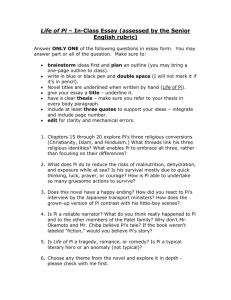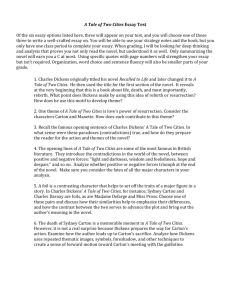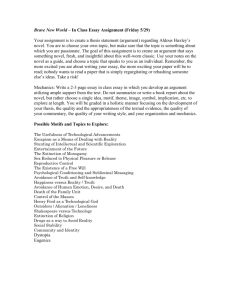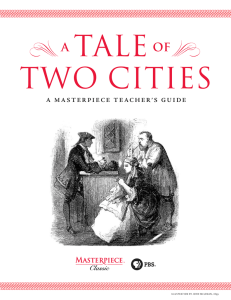Final Essay - A Tale of Two Cities
advertisement
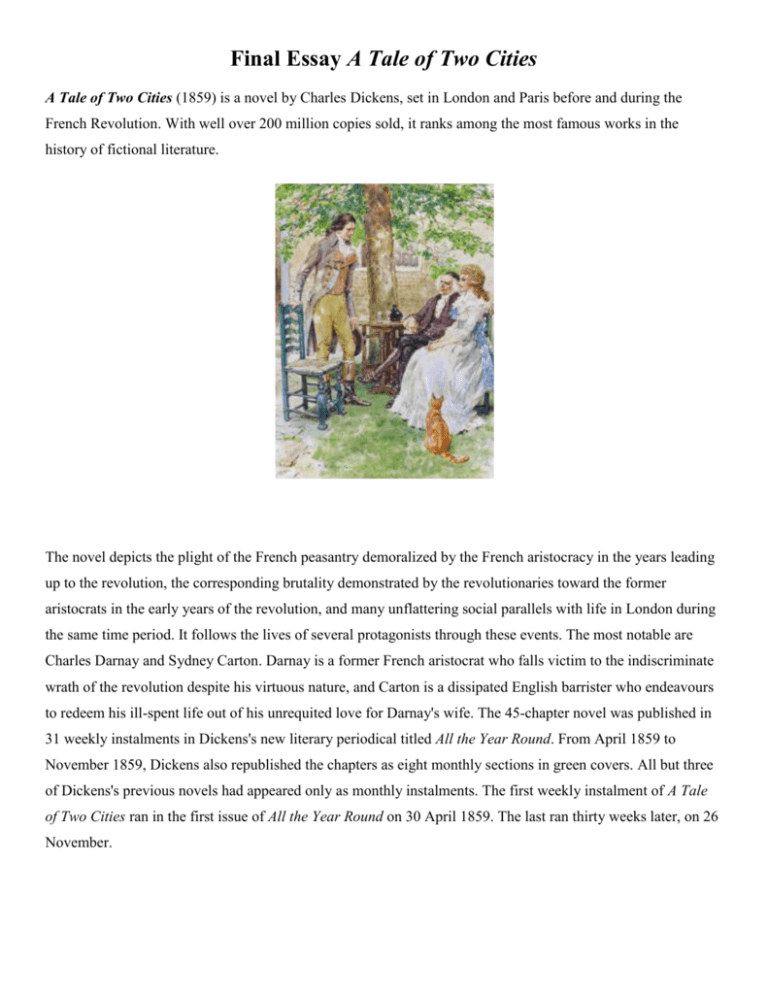
Final Essay A Tale of Two Cities A Tale of Two Cities (1859) is a novel by Charles Dickens, set in London and Paris before and during the French Revolution. With well over 200 million copies sold, it ranks among the most famous works in the history of fictional literature. The novel depicts the plight of the French peasantry demoralized by the French aristocracy in the years leading up to the revolution, the corresponding brutality demonstrated by the revolutionaries toward the former aristocrats in the early years of the revolution, and many unflattering social parallels with life in London during the same time period. It follows the lives of several protagonists through these events. The most notable are Charles Darnay and Sydney Carton. Darnay is a former French aristocrat who falls victim to the indiscriminate wrath of the revolution despite his virtuous nature, and Carton is a dissipated English barrister who endeavours to redeem his ill-spent life out of his unrequited love for Darnay's wife. The 45-chapter novel was published in 31 weekly instalments in Dickens's new literary periodical titled All the Year Round. From April 1859 to November 1859, Dickens also republished the chapters as eight monthly sections in green covers. All but three of Dickens's previous novels had appeared only as monthly instalments. The first weekly instalment of A Tale of Two Cities ran in the first issue of All the Year Round on 30 April 1859. The last ran thirty weeks later, on 26 November. Final Essay - A Tale of Two Cities Suggested Essay Questions for A Tale of Two Cities – please choose 1 1. Examine the motifs of light and darkness in this novel, and trace how they relate to Carton, Lucie, Dr. Manette, and/or Madame Defarge's character development. 2. The most recurrent criticism of this novel is that the characters do not have the psychological depth or development of other Dickensian figures. Does Sydney Carton's transformation undermine this claim? Is this criticism really fair toward the other characters? 3. Examine the theme of resurrection in the novel. Which characters are brought back to life and how? Is there any situation from which resurrection is impossible? 4. Dickens focuses mostly on the lower class in France, but what sense does he give of the lower class in England? Why was there no comparable class struggle in the same era? 5. Analyze Dickens's descriptions of mobs in England and in France. How do they differ? What makes a mob what it is? How do mobs make decisions? Once you have designed your thesis please do the following: I. Write your name, teachers name, class and date in MLA format on the left-hand side of your paper [see the white board] II. Write an original title for your essay Your essay must have a minimum of the following: 1. A Hook : a. A Rhetorical Question b. An Anecdote c. A Direct Quote 2. A three point thesis that responds fully to the prompt located at the end of the introductory paragraph. Your thesis should always be in one sentence. Your thesis must be highlighted. Please review Thesis handout, if you have questions. 3. Always write about literature in present tense. Example: Darnay goes to France. 4. Transitions between paragraphs. While Charles Darnay loves Lucy, he struggles with his past. 5. Three Body paragraphs that each include 3 quotes that support your thesis followed by clear analysis not summary. [mental tag line - This quote is important because...] Remove mental tag in essay, as it for focus only. 6. MLA Citations after all quotes - (Dickens 55). 7. Paragraphs must be at least 5 complete sentences in length [not including quotes] 8. Do not use second person (you, our, we, us). Don not use contractions (can’t, you’re etc.). 9. A Thoughtful conclusion that takes the reader beyond the text, but does not start a new essay. Usually one key line that connects to the hook or the intorduction. 10. Formatting, grammar, syntax and diction do count.


